I went through a phase a few years ago when I ate quite a lot of the tiny but mighty grain amaranth. Since then though, I’d kind of forgotten about it. But when I unexpectedly had three separate conversations about it in two days, and was given a bag full, clearly the time had come to eat some amaranth.
It’s weird that amaranth is a grain that’s only now coming into our scope of common knowledge as a trendy new superfood. Apparently people have been eating it for thousands of years with evidence that it was being cultivated between 8 000 and 10 000 years ago. This grain was a staple for the Aztec people, and was even central to their spirituality and religious rites. Because of it’s religious importance though, when Cortez and the Spanish arrived with Catholicism, the cultivation and consumption of amaranth was soon banned, and the grain nearly died off entirely. The history and cultural strife that once revolved around what you can now pick up from your local health food store is absolutely fascinating. This is a really good article if you want to learn more.
Fortunately for us, amaranth was not completely wiped out, and so we can now benefit from this really remarkable little seed. Like many of the more popular grains available, amaranth is gluten free and loaded with protein and nutrients. It is an excellent source of calcium, magnesium, potassium, phosphorus, vitamin C, and one cup of the uncooked grain contains a massive 82 percent of your RDA of iron. It also contains the highest amount of lysine, an amino acid which makes it a complete protein, of any grain. It’s leaves are also commonly used around the world as a nutritious food. It is said that the amaranth plant alone could provide around 80% of all our nutritional needs which, when you consider the fact that it is also an extremely hardy plant which grows quickly and easily in a diverse number of climates, would make it an ideal and viable food to help ease world hunger. Needless to say, if you don’t eat meat (as well as if you do) this is a brilliant addition to your diet, providing many of the essential nutrients commonly associated with meat consumption. I’m thinking about trying to grow some!
For a while now I’ve been drooling over the myriad of baked oatmeal recipes on Pinterest. While I love oats, I was thinking that it would be nice to come up with an alternative baked porridge type breakfast. I first thought of barley, as it’s one grain that I have often, but I thought it was maybe a bit heavy and chewy for breakfast. Then I thought quinoa, but perhaps quinoa’s not quite porridge-y enough. So when my sister-in-law gave me a bag of amaranth that she’d had sitting unused in her cupboard, inspiration struck. Apparently amaranth has been eaten as porridge for breakfast in India, Peru and Mexico, among other places, for ages.
I decided to add some figs, pistachios and cardamom to the recipe as my natural inclination is to include dates, almonds and cinnamon in everything. It’s good to branch out sometimes (though you’ll notice I still managed to sneak a bit of date in there for sweetness). Also, I’ve recently learned that figs are higher in many nutrients and minerals, including iron and calcium, than dates are, making them a great thing to eat of their own right.
Starting the day with this breakfast, a combination of massively nutritious foods including amaranth and figs is sure to fill you up until lunch, give you loads of energy and leave you feeling quite justifiably smug. Plus with its cardamom infused, custard-y flavour, and the crunch of pistachios and fig seeds, it’s just really nice to eat.
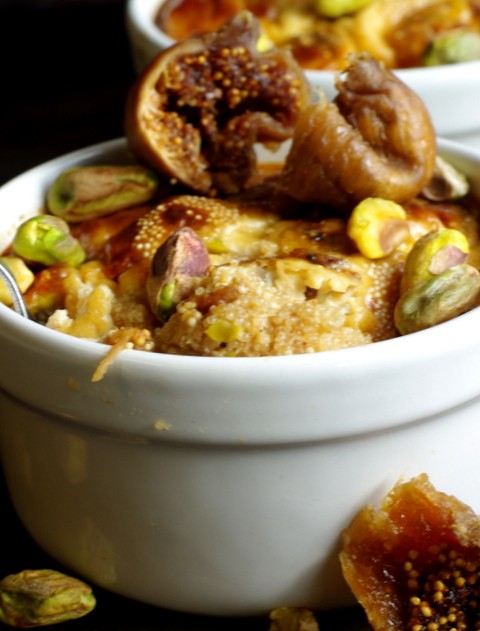

- 100g amaranth
- 250mL milk (or nut milk if you’d prefer)
- 2 dates, chopped
- 2 cardamom pods, crushed
- 1/2 tsp vanilla extract
- 1 egg, lightly beaten
- 4 dried figs, chopped
- 15g pistachios, chopped
- Pre-heat the oven to 200 degrees Celsius and lightly grease two ramekins.
- Put the dates, cardamom and vanilla extract into a small pot, pour over the milk, and set it over low to medium heat. Leave it to warm, stirring it frequently to ensure the milk doesn’t burn. When the milk has just started to bubble, remove it from the heat and set the pot aside to cool for 15 minutes.
- Put the egg into a medium sized bowl, and after the milk has finished cooling, strain it over the egg, discarding the cardamom pods and date pulp, and whisk the egg and milk until well combined.
- Stir in the amaranth, figs and pistachios, keeping back a bit of them if you choose to sprinkle over the top at the end.
- Place the ramekins on a baking tray and pour the mixture, in equal portions into them.
- Place the tray in the oven and let it cook 35-45 minutes until set, and golden brown on the top. Sprinkle over the remaining nuts and fruit and serve warm, or allow it to cool completely,cover and store it in the fridge and then reheat it in the morning.
- This gives two very filling portions. You could try dividing the portions between three or four ramekins for smaller portions.

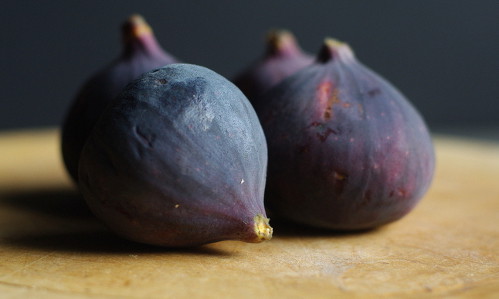
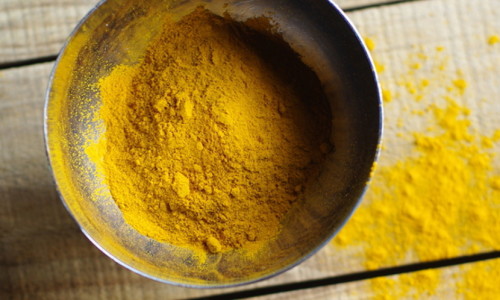
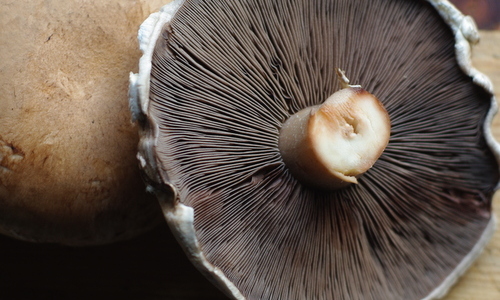
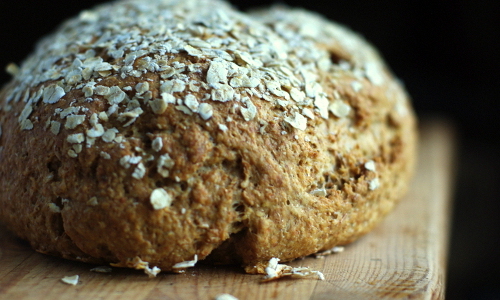
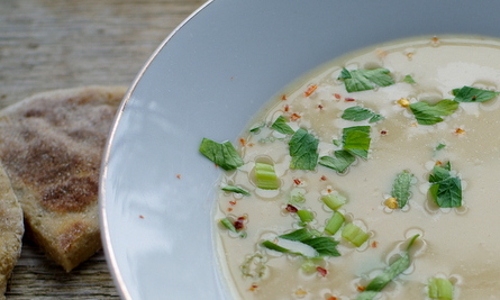
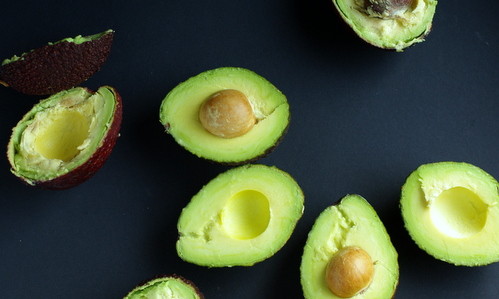
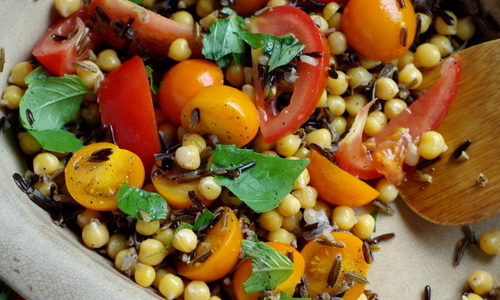
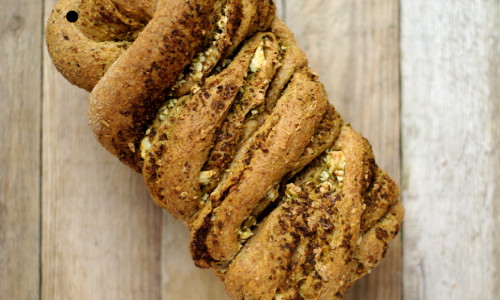
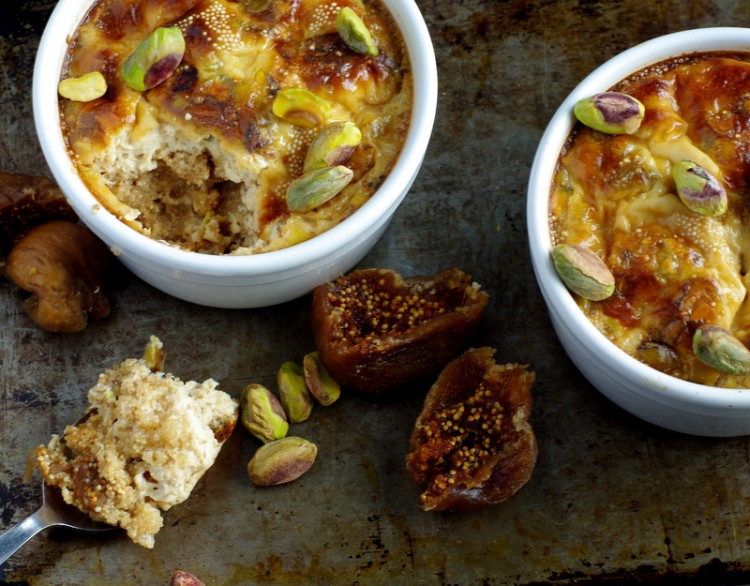
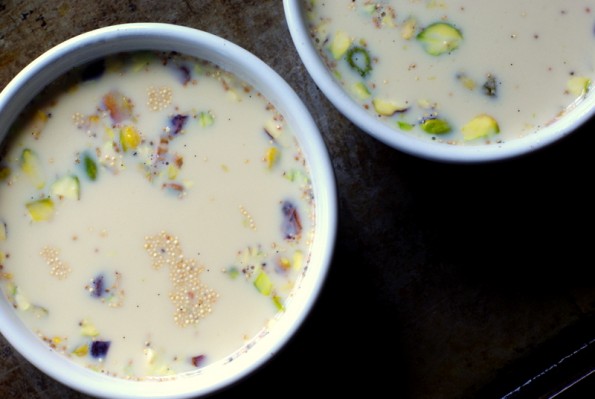
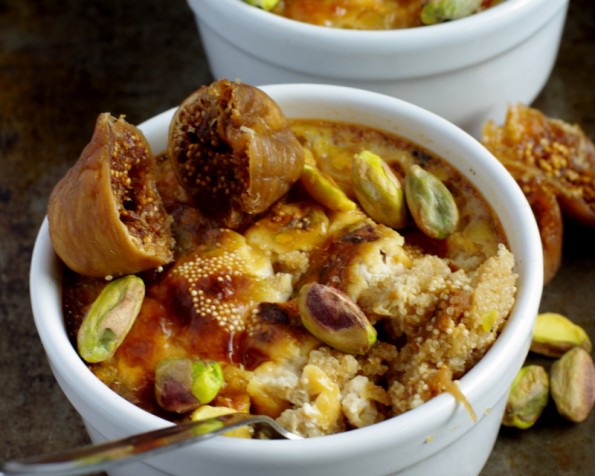
I seem to be drooling. This sounds scrumptious! I love reading your culinary adventures and your playful unique voice. Big love XX
Thanks Gabs! Big love to you too xx